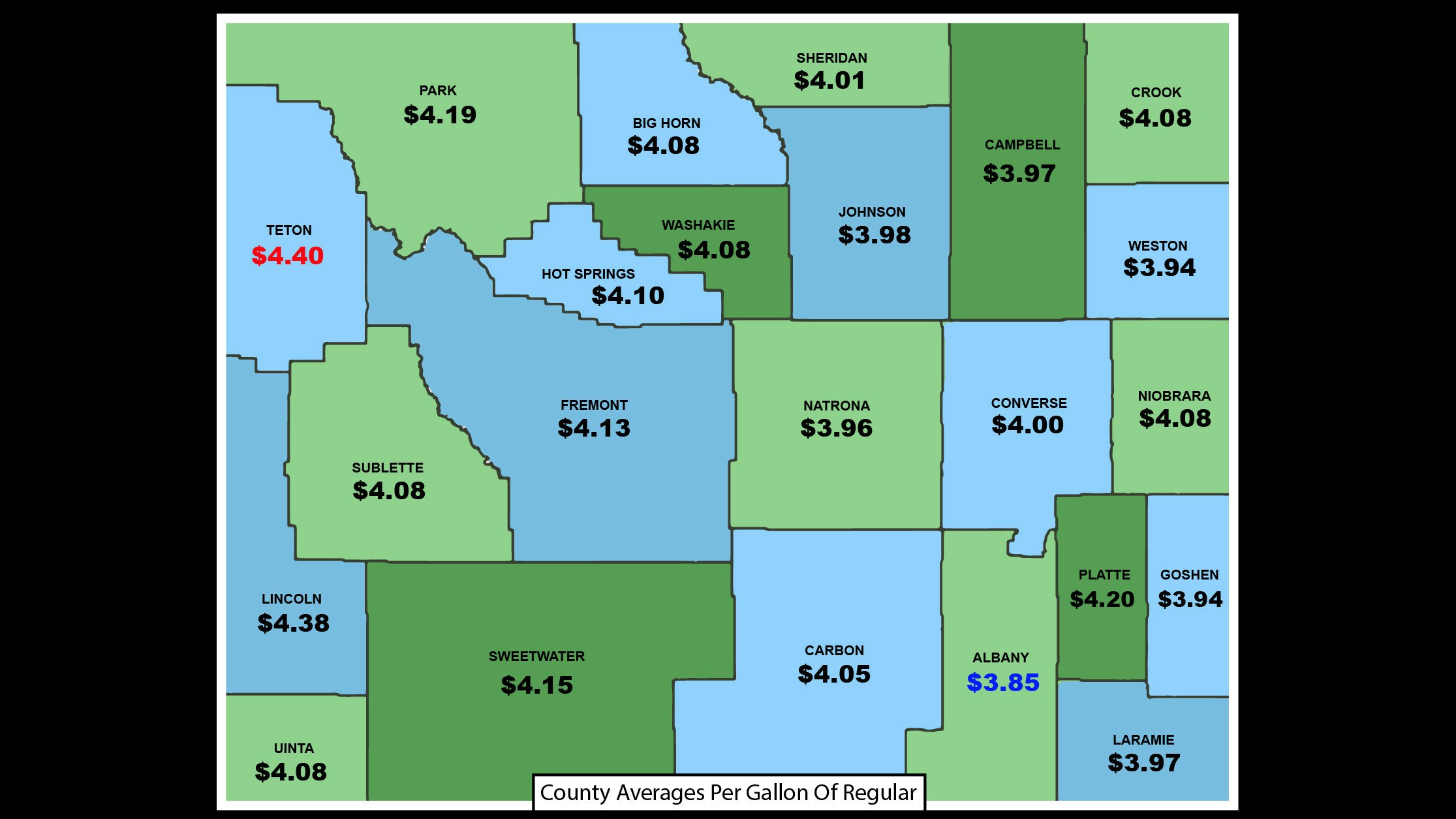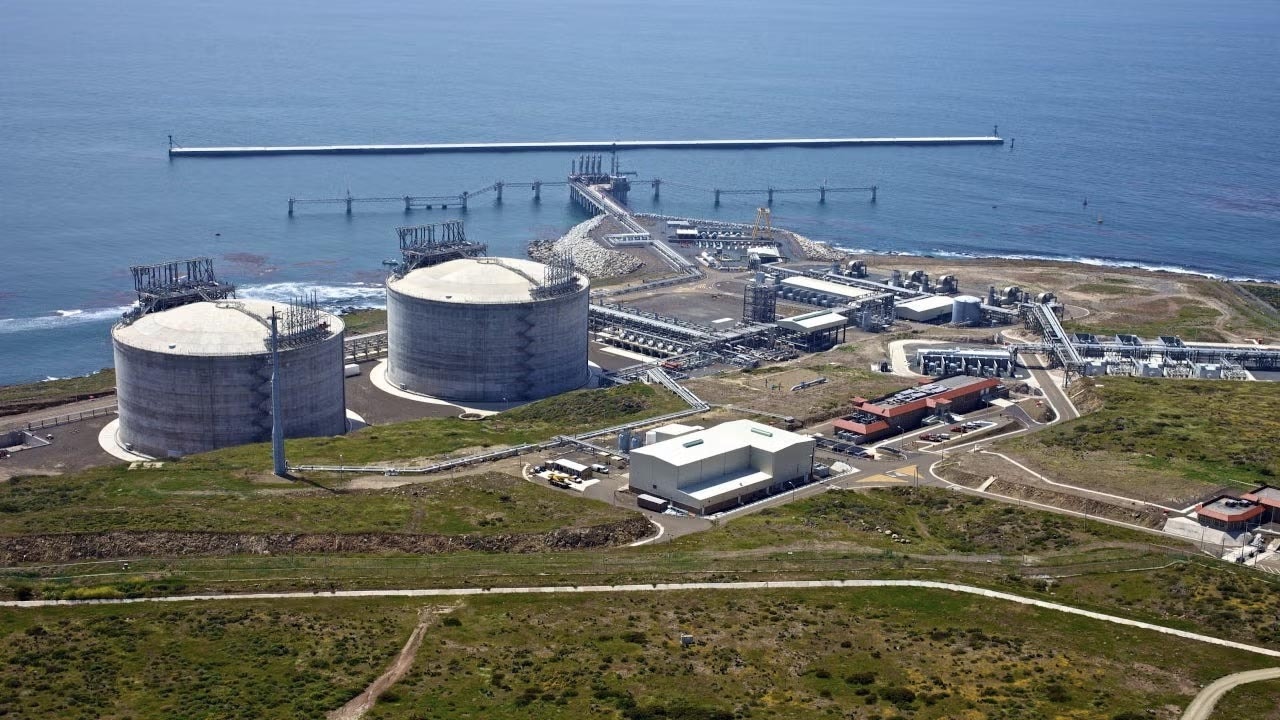The price of Wyoming gasoline increased by 3.5 cents per gallon on Friday over the previous 24 hours to average $4.10 per gallon.
The website GasBuddy.com, which tracks national gas prices, reported Wyoming’s average gas price was up 9.7 cents per gallon over a week ago, and was up by $1.21 per gallon from one year ago.
Wyoming’s average price for gasoline remained below the national average of $4.113 for a gallon of regular.
High and Low Prices:
The highest gasoline price in Wyoming on Friday was in Jackson, at $4.78 per gallon. The lowest reported price was $3.79 at the M.G. Oil Company at 502 El Camino Rd. in Gillette. The county with the highest average price was Teton at $4.40 per gallon and the county with the lowest average was Albany, at $3.85. These are the highest and lowest reported prices among those stations surveyed.
Friday’s Big Movers:
Campbell County’s average was up 10 cents per gallon, Platte County’s was up 14 cents, Lincoln County’s was up 32 cents, while Sublette County’s average was down 21 cents per gallon.
*The average price per gallon of regular in each Wyoming county:
Albany $3.85; Big Horn $4.08; Campbell $3.97; Carbon $4.05; Converse $4.00; Crook $4.08; Fremont $4.13; Goshen $3.94; Hot Springs $4.10; Johnson $3.98; Laramie $3.97; Lincoln $4.38; Natrona $3.96; Niobrara $4.08; Park $4.19; Platte $4.20; Sheridan $4.01; Sweetwater $4.15; Sublette $4.08; Teton $4.40; Uinta $4.08; Washakie $4.08; Weston: $3.94
*The lowest price per gallon, reported in major Wyoming cities:
Basin $4.15; Buffalo $3.94; Casper $3.88; Cheyenne $3.91; Cody $4.18; Douglas $3.89; Evanston $4.27; Gillette $3.79; Jackson $4.37; Kemmerer $4.39; Laramie $3.79; Lusk $3.99; Newcastle $3.87; Pinedale $4.23; Rawlins $3.99; Riverton $3.99; Rock Springs $4.07; Sheridan $3.92; Sundance $3.99; Thermopolis $4.07; Wheatland $3.89; Worland $4.08.
Tim’s Observations:
What’s the frack?
Fracking isn’t a dirty word, at least not in Wyoming. The most common way to drill a natural gas or oil well here uses fracking. But what is fracking?
Fracking is short for Hydraulic Fracturing, the process of injecting water or other solutions at high pressure into very deep wells to fracture the surrounding rock at the drill head, thus releasing more gas or oil.
Sounds simple enough, right? It’s well known in the petroleum industry that fracking has led to a renaissance in U.S. oil production. The process has turned old closed wells into producers again while making new wells even more productive.
However the process doesn’t come without controversy.
The largest fear is that fracking will pollute groundwater and harm the surface water as well.
There are many theories, yet little evidence of groundwater contamination as a result of hydraulic fracturing. According to the American Petroleum Institute (API), fracking takes place too deep to be the cause of any contamination.
According to this info-graphic from the API, hydraulic fracturing takes place thousands of feet below the water table, often at depths of 6,000 feet or more. The graphic would seem to imply it would be practically impossible to contaminate the water table thousands of feet above.

Of course accidents can happen, and although rare the possibility of contamination is seen as an unjustifiable risk by some people while others see that risk as negligible.
*Note: Prices in this report are for reference only. They are gathered just prior to posting, and may not reflect prices that have changed since last posted.





